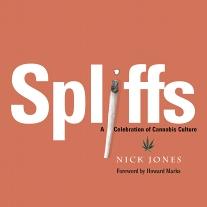According to one Urban Dictionary definition of 420, the term is “widely used in Cannabis culture as a time to get high, a national day to get high, and cannibis itself.” But the theories on how the term was invented seem to number almost as many. Today’s Washington Post article shares a few, and the Wall Street Journal shares some newer takes on the marketing of this “holiday,” but here are several classic theories that seem to have permeated the air.
Have you heard the Bob Dylan theory? It involves math, so it must be taken seriously: The “everybody must get stoned…” lyric is from the Dylan tune, “Rainy Day Women #12 & 35.” Multiply 12 times 35 and you get 420. (Dylan is also credited with introducing The Beatles to stuff.)
What about Bob? The other Bob. The Bob Marley theory is a rather mistaken since the reference is in regard to the claim that he died on April 20. He actually died on May 11.
Or how about the Police Code theory? Basically, that “a 420” announces a narcotics bust… Though widely cited, it’s not true, since there is no code for a drug bust, just a drug deal — which is referred to as a “966,” apparently. (Some people claim that it used to be known as a 420, though…grasping at straws, here.)
We look to our neighbors to the north for the Highway 420 theory: In 1960s Ontario, Canada, marijuana plants used to grow roadside on this stretch of highway. It wasn’t given the 420 moniker, however, until 1972.
The Chemical Makeup theory: Some claim there are 420 “ingredients” in weed, but the reality is that there are closer to 300, a number that fluctuates according to the source of the weed. In another take on this angle, the psychoactive chemical in marijuana is tetrahydrocannabinol. Tetra means four, and hydro means water (or H2O), and so the mash-up gets you vaguely to 420.
The Tea Time theory: Okay, this one’s cute, about 4:20 p.m. being “tea” time in Amsterdam, but still doesn’t have legs to stand on.
Most signs, however, point to the San Rafael theory as being the rightful heir to the 420 myth. In the early 1970s, a group of students (yes, they’re middle-aged now) from the San Rafael High School in California (incidentally, the first state to legalize the stuff) who called themselves the Waldos, liked to enjoy an afternoon toke at the base of the Louis Pasteur statue on campus. The term “420,” referring to the time of day they would meet at the statue to engage in the illicit activity, was their code for the meetup. In an interview with High Times, one member of the original Waldos shared what may be the actual genesis of the particular time stamp: one Waldo had heard about a patch of weed plants growing in the woods nearby. The group decided to form a search party of sorts and agreed to meet at the statue at 4:20 to embark on a search for the elusive crop (PS: they never found it).
There are a slew of other theories and coincidences and intentional instances of 4/20, 4:20, and 420 in the history of the plant that is celebrated today — and no shortage of places to read about them. So for those of you who like to get high on reading, we’ve got a special one to recommend today.






No Comments